
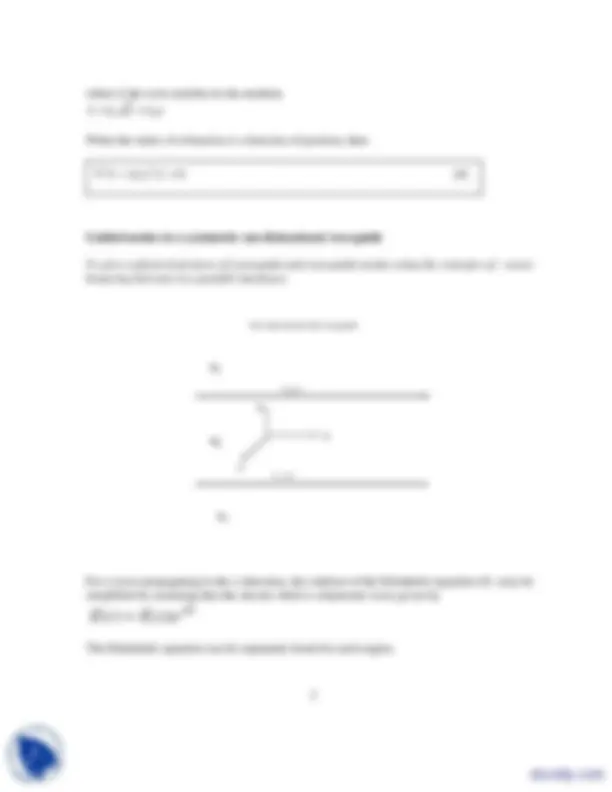
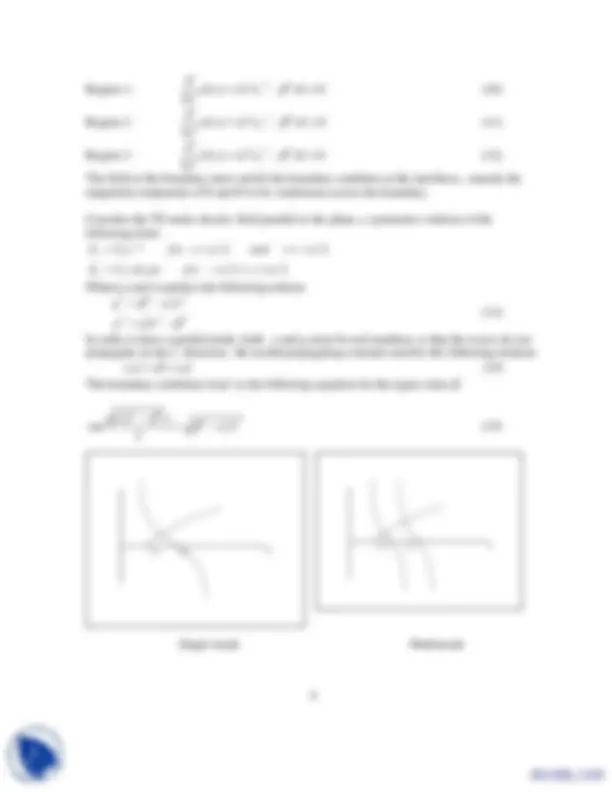
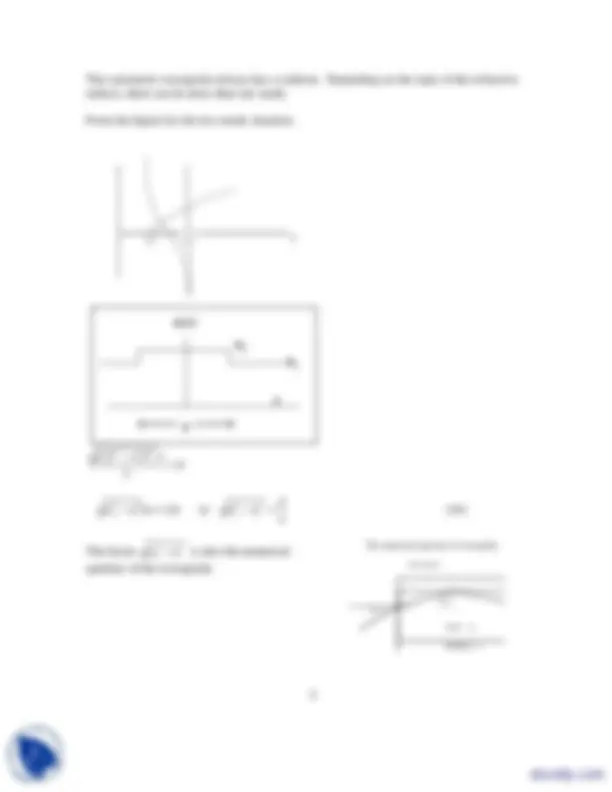
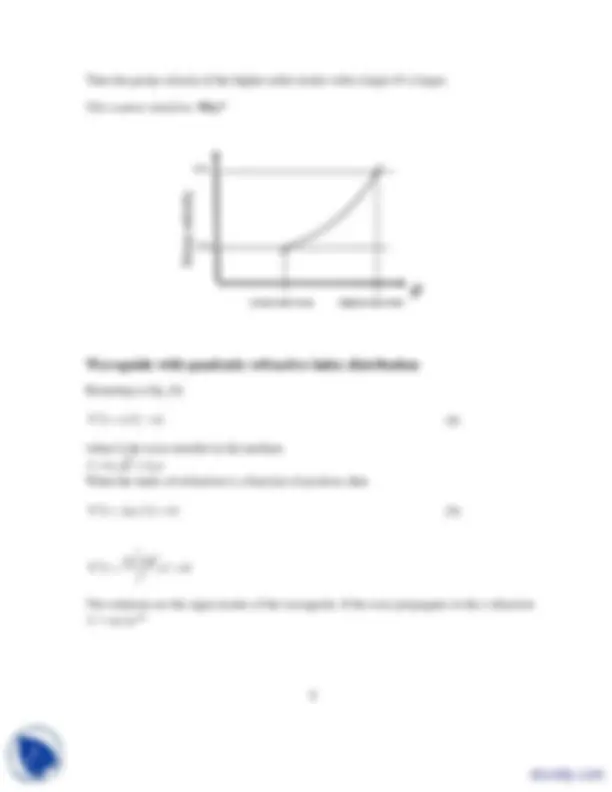
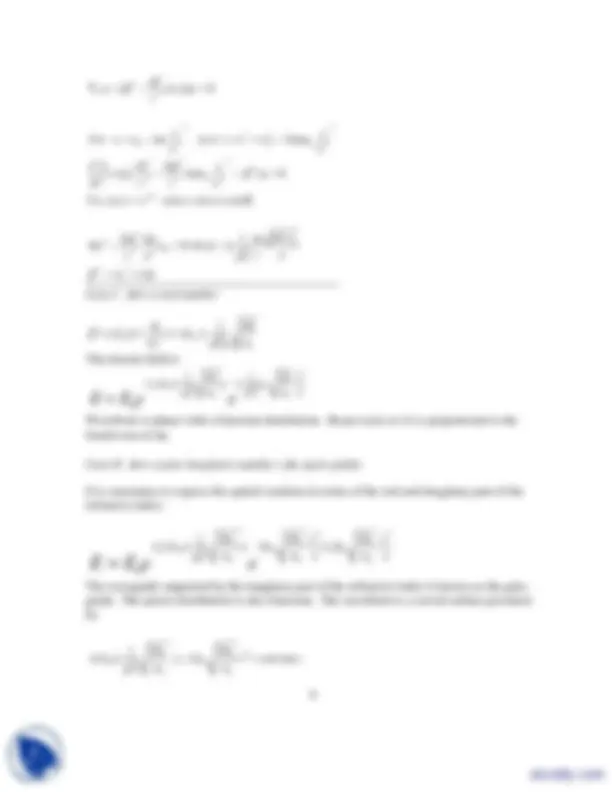
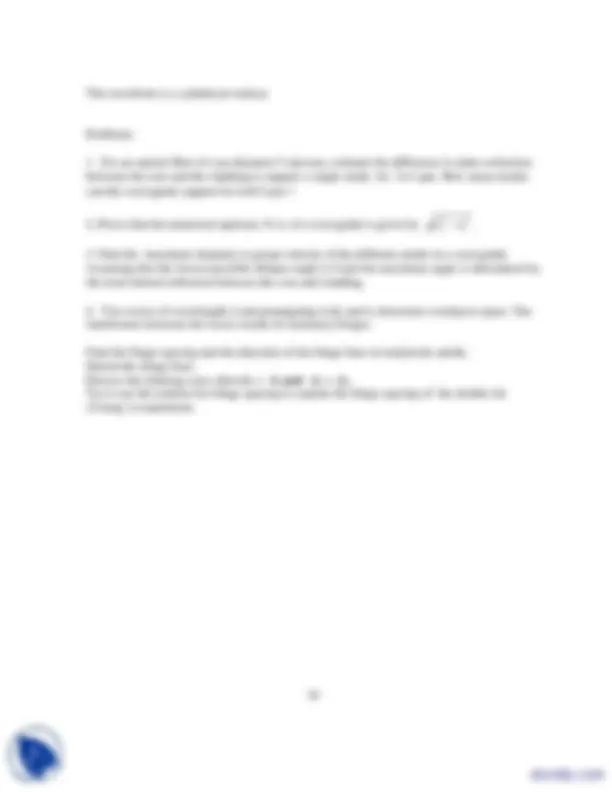


Study with the several resources on Docsity

Earn points by helping other students or get them with a premium plan


Prepare for your exams
Study with the several resources on Docsity

Earn points to download
Earn points by helping other students or get them with a premium plan
Community
Ask the community for help and clear up your study doubts
Discover the best universities in your country according to Docsity users
Free resources
Download our free guides on studying techniques, anxiety management strategies, and thesis advice from Docsity tutors
The properties of waves in dielectric media and waveguides, focusing on the balance between diffraction and confinement processes. The discussion covers wave propagation, wave equations, and the behavior of waves in nonlinear media. Key concepts include the relationship between electric fields and polarization densities, maxwell's equations, and the helmholtz equation.
Typology: Study notes
1 / 10

This page cannot be seen from the preview
Don't miss anything!







2 Waves in dielectric media and waveguides
In this lecture, we will consider the properties of waves whose propagation is governed by
both the diffraction and confinement processes. The waveguides are a result of the balance
between the the diffraction and confinement.
The concept of wave propagation as a re-emission process.
Waves in dielectric media
E P= εεεε 0 χχχχ (r, t, θθ θθ , E) E
Waveguiding:χχ χχ (r )
Dispersive: χχχχ ( t ) or χχχχ ( νννν )
Nonlinear: χχχχ ( E)
t P ( t ) χ( t t ') E ( t ') dt '
Wave equation in linear non-dispersive homogenous and isotropic media
Non-dispersive media-- here it means “ instantaneous”.
The vector of the polarization density is instantaneously following that of the electric field.
P = ε 0 χ E , (1)
Where χ is the electric susceptibility which does not depends on r, t or E. From the relation
D = ε 0 E + P between the electric displacement and polarization, and D= ε E
The dielectric constant is given by
ε = ε 0 ( 1 + χ) (2)
Maxwell’s equations are
0
μ
ε
Which lead to the same form of wave equation as in free space except that the speed of light
is redefined.
0
1
2
2
2
∂
∂ ∇ − t
U
c
U
Where
0 0 0
( 1 )
c c
n
c c =
Next, we will work out a more general approach to allow P to depend on E.
Waves in a Nonlinear Medium
What is a nonlinear medium?— P is a function of E
With the nonlinear dependency, P cannot be factored into E.
t
2
2
2 0
2
3 0 0
2
0 0 t
t
t
t
∇×∇× =−μ μ με μ
It follows that
2
2
2 0
2
2 0
t
t
c
∇ − μ (7)
where P is a nonlinear function of E. P can be at a different frequency from that of E. This
equation will be used extensively later. The polarization vector becomes the source which
plays a major role in nonlinear frequency generation, laser, and waveguide coupling to be
discussed later.
Examples. The P may contain multiple powers of E. As a result, new frequencies may be
generated.
Monochromatic electromagnetic field in a medium
When both E and H are harmonic waves of frequency ω, Maxwell’s equations for a non-
dispersive medium become
E j B
B j D
Where D = ε 0 E + P and B = μ 0 H. These relations will lead to the Helmholtz equation
2 2 ∇ U + kU = (8)
Region 1: ( ) ( ) 0
(^22) 1
2 2
2
E x k n E x
Region 2 ( ) ( ) 0
(^22) 2
2 2
2
E x k n E x
Region 3 ( ) ( ) 0
(^22) 1
2 2
2
E x k n E x
The field at the boundary must satisfy the boundary condition at the interfaces., namely the
tangential component of E and H to be continuous across the boundary.
Consider the TE mode electric field parallel to the plane, a symmetric solution of the
following form
cos / 2 / 2
2
1
E C px for a x a
E Ce for x a and x a
y
qx y
−
Where p and h satisfies the following relation
2 2 2 2
2
2 2 1
2 2
β
β
p n k
q n k (13)
In order to have a guided mode, both p and q must be real numbers so that the waves do not
propagates in the x direction, the modal propagating constant satisfies the following relation:
2 2 1
2
2 2 2 2
2
tan n k
n k a = −
Single mode Multimode
n 1 k n 2 k β n 1 k n 2 k β
The symmetric waveguide always has a solution. Depending on the steps of the refractive
indices, there can be more than one mode.
From the figure for the two-mode situation,
n 1 k n 2 k β
2 2 1
2 2 n (^) 2 k n k a
2 π
2 1
2 n (^) 2 − n ka < or a
n n
λ − <
2 1
2 2 (16)
The factor
2 1
2 n 2 (^) − n is also the numerical
aperture of the waveguide.
2
1
The numerical aperture of waveguide
Core n 2
Cladding n 1
θ c θ
N.A.=sin θ
Beam profiles
From Eq. (13)
2 2 2 2
2
2 2 2 2
Internal field distribution
The beam profiles of the guided modes can be understood as being the interference fringes of
the two waves bouncing between the two interfaces.
The lowest order mode has the smallest p value and no node. The higher order mode has a
larger p values and large number of nodes.
Field in the cladding
The field in the cladding decrease exponentially with increasing distance from the core. The
larger q value, the faster the decay. The propagation constant β is bound within the range
confined in the core. The higher-order mode have smaller values for q and the electric field
extends more into the cladding_. This may be counter intuition—why?_
Group velocity of guided modes
The group velocity, the velocity of energy or wave packet that is detectable, is given by
ω
Groupvelocityvg =
From Eq. (13),
2 2
2 2 2
2 2 2 2
2
c
p n k n
ω βsec θ n 2
The group velocity is given by
sec θ n 2
c vg =
This counter intuition. Why?
Waveguide with quadratic refractive index distribution
Returning to Eq. (8)
2 2 ∇ U + kU = (8)
where k the wave number in the medium
When the index of refraction is a function of position, then
2 2 ∇ U + kr U = (9)
2
2 2 ∇ + =
→
c
r U
The solutions are the eigen modes of the waveguide. If the wave propagates in the z-direction
i z U ux e
β = ( )
Group velocity
c/n 1
c/n 2
Lowest-order mode Highest-order mode
The wavefront is a cylindrical surface.
Problems:
between the core and the cladding to support a single mode for λ=1-μm. How many modes
can this waveguide support for λ=0.5 μm.?
2..Prove that the numerical aperture, N.A, of a waveguide is given by
2 1
2 n (^) 2 − n.
Assuming that the lowest possible oblique angle is 0 and the maximum angle is determined by
the total internal reflection between the core and cladding.
interference between the waves results in stationary fringes.
Find the fringe spacing and the direction of the fringe lines in relation k 1 and k2.
Sketch the fringe lines.
Discuss the limiting cases when k 1 = k 2 and k 1 =- k2..
Try to use the relation for fringe spacing to explain the fringe spacing of the double slit
(Young’s) experiment.